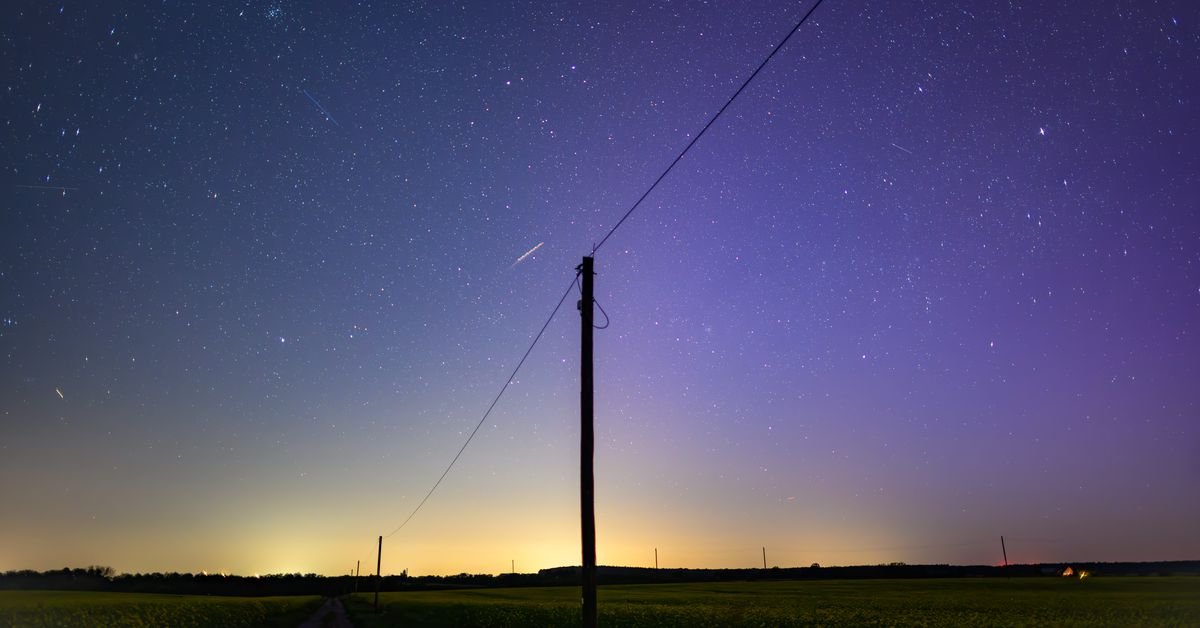[ad_1]
The National Weather Service’s Space Weather Prediction Center (SWPC) issued a rare “severe” geomagnetic storm watch for the US for Friday night. The Met Office weather service also issued a similar watch for the UK for Friday and Saturday. They’re worried about coronal mass ejections (CMEs), explosions of plasma and magnetized particles coming from the Sun, that could potentially impact critical infrastructure, including the power grid, internet cables, and satellites.
This is the first time since 2005 that the SWPC has issued a watch for a storm rated as G4, which is the scale’s second-highest rating. Critical infrastructure operators have been notified so they can take precautions, the center says.
Worst-case scenario, all those charged particles shooting toward Earth could lead to power outages and disrupt services, including GPS, that rely on satellites. If grid and satellite operators can shore up their infrastructure ahead of time, and if the storm doesn’t grow even more extreme than forecast, people might not notice anything is going on — save for aurora lights that could become more visible. It’s too early to predict the impact, but the storm watch means it’s a good idea to prepare.
You can compare this geomagnetic storm watch to similar notices issued for tornadoes or hurricanes
You can compare this geomagnetic storm watch to similar notices issued for tornadoes or hurricanes. The watch means that conditions for a severe event are likely possible. If it elevates to a warning, that means the agency is pretty certain we’re about to get hit.
While the watch is in effect starting tonight, the timing is still up in the air. The peak of the storm could occur as early as this evening, Eastern Daylight Time, or later Saturday night. The agency only expects 20–45 minutes of lead time before issuing a warning. They won’t know the level of severity until the CMEs are around 1 million miles from Earth (the Sun is around 93 million miles away from Earth).
Once they reach Earth, CMEs interact with our planet’s magnetic field. That can suddenly induce an electrical current into power lines, railroad tracks, pipelines, and basically any long piece of infrastructure that can conduct electricity.
The last time a storm like this was a big problem was the notorious Carrington Event of 1859 when a G5 geomagnetic storm knocked out telegraph machines around the world. Obviously, there are a lot more technologies we rely on today that could become vulnerable. Blackouts would not only affect homes and businesses; they could also cut off power to the network of subsea fiber optic cables that undergird the internet. Fortunately, SWPC says, there should be enough redundancy in these systems to avoid major problems. But this is all still uncharted territory.
“I don’t think we have any real-time experience yet with a significant [geomagnetic] storm and fiber optic cables under the sea,” Rob Steenburgh, a space scientist at SWPC, said in a briefing. “There would be impacts, but they should not be to the level that would disable them.”
There are also changes to Earth’s atmosphere that could pose risks to satellites. The ionosphere, an upper layer of the atmosphere, becomes more dense — creating more drag for satellites in lower Earth orbit.
“They slow down … If they don’t take the proper measures, then they can lose altitude,” SWPC space weather forecaster Shawn Dahl said.
Back in 2022, a geomagnetic storm may have led to the demise of as many as 40 Starlink satellites that couldn’t reach their proper orbit. Changes in the ionosphere also affect high-frequency radio communications and GPS, potentially severing signals between GPS satellites and receivers on Earth.
The upside is that more people could see the northern and southern lights this weekend since auroras are the result of particles from solar storms interacting with Earth’s atmosphere. Back in 1859, the northern lights extended all the way to Central America. This time around, they might be seen as far south as Alabama.
[ad_2]
Source link





